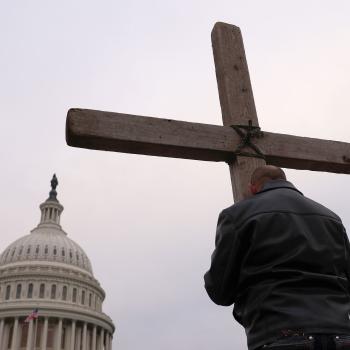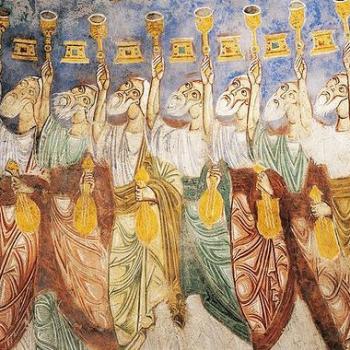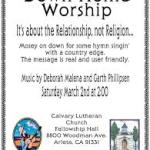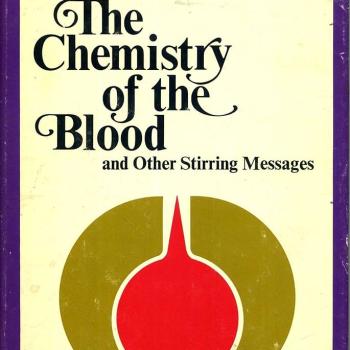Is Mormonism Christian?
If you expect a simple, black-and-white answer to the question “Is Mormonism Christian?” you’ll be disappointed. I’m not going to offer that here. I will, however, offer my opinion about whether the Church of Jesus Christ of the Latter Day Saints is a Christian church. “Mormonism,” however, is less a clear and distinct idea than “the LDS Church.” The LDS Church is an organization with spokesmen and at least somewhat authoritative statements. Mormonism, however, is a bit amorphous and is always evolving. Yesterday’s Mormonism is not necessarily today’s Mormonism or future Mormonism. And Mormonism in the local Ward (congregation) is not necessarily the same as Mormonism among Mormon scholars at Brigham Young University or in the local LDS/Mormon Institute.
Of course somewhat the same could be said about the LDS Church, the Salt Lake City headquartered 13 million member worldwide organization most people call “the Mormon Church.” (There are other Mormons and other churches that trace their roots back to Joseph Smith.) The LDS Church headquartered in Salt Lake City also changes over time. (For example it banned “plural marriage” or polygamy in 1890.)
Still, for purposes of this essay, “Mormonism” is a shape-shifting tradition difficult to pin down. Even the top scholars of the LDS Church at Brigham Young University do not agree one hundred percent about it. There is a sense in which Mormonism is a conversation around a central core with fluid and flexible boundaries. The LDS Church, however, has greater boundaries determined by its present authoritative leaders.
Before I offer my own understanding of Mormonism as a worldview, religion and tradition, please allow me to offer my “credentials” for speaking about it. I am not a Mormon and never have been, but I have a nearly life-long interest in Mormonism, have read many books about Mormonism by Mormons and non-Mormons, have engaged in vigorous discussions with Mormons of all kinds—from teenage missionaries to top scholars of the LDS Church and many “in between.” I have had friends and colleagues who were Mormons. And I have studied and taught about Mormonism for courses on American religion.
I count as a friend (or at least friendly acquaintance) one of the most respected Mormon scholars in the world—Robert (Bob) Millet of Brigham Young University. He is professor of ancient scripture and emeritus Dean of Religious Education at Brigham Young University in Provo, Utah and the author of numerous books about Mormonism.
Perhaps my closest encounter with Mormonism was two weekend ecumenical dialogue events at Brigham Young University (henceforth “BYU”). I was invited by Bob Millet and his colleagues to read papers at these symposia; other participants ranged from Roman Catholic to Eastern Orthodox to Seventh-Day Adventist to Church of Christ and many other Christian traditions. No limits were put on what I could say and I took the invitations as opportunities not only to understand Mormonism better but also to witness to the Mormons about orthodox, biblical Christianity. (My read papers were eventually published in edited books.)
I learned a lot about Mormonism during those two weekends. The Mormons who hosted the events were clearly motivated by a desire to convince the rest of us—Christians of many traditions—that they and their church are Christians even if Christians “with a difference.” I discerned from them, as well as from reading contemporary Mormon literature, that the top leaders of the LDS Church very much want their religion and church to be considered authentically Christian—the fourth “branch,” as it were, of Christianity: Eastern Orthodox, Roman Catholic, Protestant, Mormon.
My weekends with the Mormon scholars at BYU convinced me of several things. First, the average Mormon does not really understand Mormonism the same way it is understood by Mormon theologians. After my weekends at BYU and after reading books about Mormon theology by Bob Millet and other contemporary Mormon religion teachers I shocked many Mormon missionaries and other “grassroots” Mormons by telling them what their own scholars believe and don’t believe. The gap is, in my opinion, very wide and deep.
So that raises the question I began with: What is “Mormonism?” Is it what the Mormon scholar-theologians at BYU say it is or is it what the average, garden-variety Mormon lay person believes? Or is it what past presidents of the LDS Church said? Or is it what conservative Christian critics of Mormonism say it “really” is? I am going to “go with” a mix of those while largely discounting what the conservative Christian critics who call Mormonism a “cult” say. In my experience most of them have not kept up with changes in Mormonism and many of them have never really read contemporary Mormon literature. Many, perhaps most of them, do not believe what Bob Millet and other “progressive” Mormon scholars say about Mormonism; they think they are simply lying or at least engaging in deception about Mormonism today. I know Bob Millet personally and disagree. However, I am not sure in my own mind that Bob Millet’s understanding of Mormonism coincides perfectly with either the LDS leadership or the average “bishop” of a Mormon ward or “elder” of a Mormon “stake.” I know they don’t coincide with some of the pronouncements of past presidents of the LDS Church and past Mormon spokesmen.
So what are my sources—other than talking to and listening to BYU Mormon scholars—about Mormonism? I have read several critical (scholarly) books about Joseph Smith and Mormon origins and history. One that has especially interested and impressed me is The Refiner’s Fire: The Making of Mormon Cosmology, 1644-1844 by Tufts University history professor John L. Brooke published by Cambridge University Press in 1994. I’ve read it twice. It’s not the only book about Mormon origins and history I’ve read, but it is the most scholarly and convincing. Brooke piles up a very strong circumstantial case that Joseph Smith was a sincere but deluded religious seeker who created an eclectic new religion out of preexisting traditions including Freemasonry, Hermeticism, radical Puritanism, Restorationist revivalism, and others. I am convinced that Joseph Smith, who Mormonism call “the Prophet,” came to believe his own mythology, but it originated in preexisting sources which he creatively integrated into what we might call “paleo-Mormonism”—Mormonism as it was in the 1820s through the 1840s and perhaps beyond.
Another source or sources is, of course, the Mormon “canon” of Scriptures in addition to the Bible: The Book of Mormon, The Pearl of Great Price, and The Doctrine and the Covenants. I have also read many of the sermons and speeches of the Mormon presidents including Joseph Smith’s own “King Follett Discourse” and Lorenzo’s Snow’s sermons.
As for Mormon doctrine I have three main written sources: A Study of the Articles of Faith (Being a Consideration of the Principal Doctrines of The Church of Jesus Christ of Latter-Day Saints) by James E. Talmadge, “one of the twelve apostles of the Church,” published by the LDS Church in 1890 (twelfth edition published in 1924 with a Preface by Talmage); Mormon Doctrine (Second Edition) by Bruce R. McConkie, also a member of the “Quorum of the Twelve [Apostles],” published by Bookcraft, Salt Lake City, 1979. Both of those books were widely considered authoritative summaries of Mormon doctrine when they were published if not today. Finally, LDS Beliefs: A Doctrinal Reference by Robert Millet, Camille Fronk Olson, Andrew C. Skinner, and Brent L. Top, published by Desert Books, Salt Lake City, 2011. Deseret Books would not publish it if it were not considered accurate and at least relatively authoritative.
In addition to those books I have read and rely on (for understanding LDS doctrine and Mormonism in general): The Vision of Mormonism: Pressing the Boundaries of Christianity by Robert Millet, published by Paragon House, 2007, Bridging the Divide: A Continuing Conversation between a Mormon and an Evangelical by Robert Millet and Gregory Johnson (a Baptist pastor in Utah who grew up Mormon), published by Monkfish Books, 2007, and How Wide the Divide: A Mormon and an Evangelical in Conversation by Craig Blomberg (and evangelical New Testament scholar) and Stephen E. Robinson (a Mormon scholar) published by InterVarsity Press, 1997.
Years ago I read several books about Mormonism by Christian anti-cult apologists, but I have found much of what they said to be unreliable—not so much because it was blatantly false as that it lacked evidence of first-hand acquaintance with Mormon scholarship and, in my view, put the worst “spin” possible on Mormon beliefs—blowing some out of proportion.
Much anti-Mormon Christian criticism draws heavily on enigmatic sayings of past LDS Church presidents who are considered prophets by Mormons, but today’s Mormon scholars such as Robert Millet insist that those sayings are not considered either infallible or authoritative for all Mormons. For example, LDS Church president, Mormon prophet, Lorenzo Snow (1814-1901) preached that “What man is God once was; what God is man may become.” This is probably the most quoted Mormon saying by Christian critics of Mormonism. Robert Millet says that he and other Mormons are not required or expected to agree with it; it is not authoritative Mormon doctrine.
I find it very challenging to pin down exactly what it is Mormonism includes—in terms of beliefs. Determining key Mormon practices is easier. Yes, Mormon men generally wear special underwear, but so what? That doesn’t bother me, nor should it bother anyone. It’s part of their culture. Yes, Mormons engage in “temple works” including baptism on behalf of the dead and “celestial marriage” to “seal marriage for time and eternity.” Yes, Mormons stockpile non-perishable food and send their teen boys (now some girls, too) out two-by-two as missionaries for a year. I am more interested in what “Mormonism” means in terms of beliefs even if I find some LDS practices curious and even odd.
Here is an illustration of how difficult it can be to determine what Mormonism is in terms of beliefs. (You would think it would be easy since the three books of Mormon doctrine I mention above are all quite large, detailed, but in fact they seem to me to contradict each other and sometimes themselves! Well, that’s my “outsider’s” view.) At the end of my second weekend conference at BYU several Mormon scholar-professors asked me “Well, Roger, do you think we’re Christians?” I was prepared for that question. I asked “Do you believe Jesus is God?” (To me that’s a litmus test question as it is for the World Council of Churches.) They all said “Yes” without hesitation. But I knew enough about historical Mormon teachings about God and eternal progression and Jesus being the Father’s offspring that I then asked “Was he always God?” One said “No” and another said “Yes” and the third simply stared at me and the others. Then the three of them (and as I recall a few others) fell into deep conversation among themselves about what they believe about the preexistence of Jesus Christ and his eternal deity.
When I compare the three (at least relatively) authoritative books of Mormon doctrine mentioned above I find in them an evolution of Mormonism over time. Some of it is explicit and some of it is a matter of tone. Talmage’s book, written in 1890, is extremely harsh toward all non-Mormon churches, lumping them all together as part of the “great apostasy.” According to Talmage, the president of the LDS Church is “God’s mouthpiece.” Also, the doctrine of justification by grace through faith alone is a “most pernicious doctrine.” Salvation is by baptism and good works as well as faith. Talmage denied the omnipresence of God and condemned any idea of an “immaterial God.” He affirmed that eternal rewards in heaven (“degrees of glory”) are based primarily on “earthly works.” Perhaps worst of all, from a traditional Christian perspective, is Talmage’s account of Mormon belief about “Man’s Relationship to God” (Appendix 24, part 4): “In his mortal condition man is a God in embryo” and “in the far future…man may attain the status of a God.” Also, “Mormonism claims an actual and literal relationship of parent and child between the Creator and man—not in the figurative sense in which the engine may be called the child of its builder; not the relationship between a thing mechanically made and the maker thereof; but the connection between father and offspring.” Talmage also affirmed that the Father, Son and Holy Ghost are “three…separate individuals, physically distinct from each other” and that the Father, like the Son, is a literal man. The “tone” of Talmage’s account of Mormonism versus traditional Christianity is illustrated in this saying: “We affirm that to deny the materiality of God’s person is to deny God….” (p. 48)
Most, if not all, of the stereotypical “heresies” attributed to Mormonism by anti-Mormon, anti-LDS Christian critics can be found somewhere in Talmage’s book. And the tone of the book is clearly, unequivocally anti-everything but Mormonism. The book affirms “eternal progression” after death—from one heaven to another—for those who receive baptism for the dead by living Mormons and for those who continue in good works after death. It also affirms the preexistence of souls or spirits as well as “exaltation” to deity for those Mormons who persevere in faith and good works as defined by the LDS scriptures and prophets.
Jumping to Bruce McConkie’s Mormon Doctrine. This book breathes a slightly different spirit from Talmage’s; it is less concerned with condemning non-Mormon churches even as it strongly affirms the “restoration of Christian authority” with Joseph Smith and the higher truth held by the LDS Church over others. McConkie’s exposition of the Mormon doctrine of God is less starkly materialistic than Talmage’s even as he quotes at length Joseph Smith’s “Teachings” that God was once “as we are now” and “is an exalted man [who] sits enthroned in yonder heavens.” McConkie also affirms as Mormon belief that “That exaltation which the saints of all ages have so devoutly sought is godhood itself. Godhood is to have the character, possess the attributes, and enjoy the perfections which the Father has. It is to do what he does, have the powers resident in him, and live as he lives, having eternal increase.” (p. 321) McConkie firmly rejects the traditional Christian doctrines of inherited sin, salvation by grace alone, the Trinity and final judgment after death. (A “p.s.” is in order here to head off Mormon objections. Yes, McConkie affirms that “salvation” of a general kind—resurrection to immortality—is by grace alone, but this is not “the salvation which the saints seek.” Salvation as future “inheritance of the kingdom of God” is dependent, McConkie says, on “repentance, baptism, receipt of the Holy Ghost, and continued righteousness to the end of one’s mortal probation.” In his article “Salvation by Grace” McConkie clearly condemns belief that real, ultimate salvation can be by grace alone and affirms that for it “obedience to the laws and ordinances of the gospel” is necessary. (p. 671)
Overall, McConkie’s tone differs somewhat from Talmage’s. There is real continuity between the two books, but one can discern in McConkie a softening of the “rough edges” of Mormonism and a greater generosity toward non-Mormons of good will who have a real chance at eternal salvation. Still, the basic core differences between Mormonism and traditional Christianity about the transcendence of God, the depravity of humanity, salvation by grace alone, exaltation of saved persons to godhood and continuing revelation are found in McConkie as in Talmage.
I think LDS Beliefs: A Doctrinal Reference constitutes a quantum leap from Talmage and McConkie with regard to tone and expression of Mormon doctrines. The chapter on “Godhood” is illustrative. The authors (and I suspect Bob Millet was the primary author of this chapter) go out of their way to express “exaltation” in terms of biblical and traditional Christian (e.g., Eastern Orthodox) “deification” (theosis). (In other writings Millett refers to Luther and Wesley and C. S. Lewis as proponents of deification.) The emphasis here is not so much on “man” becoming as God is as man becoming like God. It is much easier for an orthodox, evangelical Christian to accept this chapter’s account of exaltation or at least find some sympathy with it. The authors of LDS Beliefs go out of their way to soften the rough edges of past Mormonism to make its doctrines more acceptable to classical, orthodox Christians. Continuity rather than discontinuity is the theme. The chapter on “The Great Apostasy” is instructive and illustrative of the change in tone. While affirming the divine restoration of Christian authority with Joseph Smith and the founding of the LDS Church in 1830 the authors go out of their way to insist that God always had true followers throughout church history and people who strove to maintain authentic Christian faith in spite of the Catholic Church’s general apostasy. Most importantly, perhaps, LDS Beliefs is much more Christ-centered than earlier books of Mormon beliefs and more grace-centered. Less emphasis is placed on the necessity of works for ultimate salvation and more emphasis is put on Christ’s atoning work, God’s grace and mercy and human faith—all without diminishing the importance of personal holiness and faithfulness as fruits of forgiveness and reconciliation.
There is no doubt in my mind but that something is going on in the LDS Church and Mormonism in general that constitutes a gradual but discernable shift away from those doctrines most anti-Mormon Christian critics like to highlight toward a somewhat more biblical and even evangelical account of Christ and salvation. This comes out even more clearly in Bob Millet’s books The Vision of Mormonism, Bridging the Divide and A Different Jesus? And Grace Works. Millet all but denies belief that God was once a man “just like us” and that we will (hopefully) eventually become God just as the Father is God. He affirms the eternal deity of the Son of God and his incarnation in Jesus Christ and emphasizes the transcendence, even infinity, of the triune Godhead. He stresses the unity of the three persons of Father, Son and Holy Spirit. He quotes voluminously from C. S. Lewis, John Macarthur, Dallas Willard, Max Lucado and numerous other modern and contemporary evangelical Christian writers and is very familiar with the church fathers and Reformers. Perhaps most importantly he vigorously denies and rejects polytheism—belief in many Gods.
Now don’t get me wrong; Robert Millet would want me to affirm that he is definitely Mormon. What I am suggesting is that there is a gradual but discernable shift taking place in the LDS Church and its Mormonism, or at least in the Mormonism being defined and re-defined by BYU scholars. An anecdote might illustrate what I’m talking about. When I was teaching a course on “America’s Cults and New Religions” at a Christian liberal arts college I invited the director of the local Mormon Institute, like a Bible college or seminary but not usually degree-granting, to speak to my class. He was obviously a very knowledgeable Mormon. When I asked him privately how he would describe the relationship between Mormonism and Christianity he said “Mormonism is to Christianity as Christianity is to Judaism.” I thought that was a somewhat fair description—in the sense that I perceived Mormonism to be qualitatively different from, even if rooted in, Christianity. But when I told that to Bob Millet and his colleagues at BYU they reacted very negatively insisting that Mormonism, as espoused by the LDS Church, is most definitely Christian—“with a difference.” In other words, they explained, it is not “orthodox Christianity” but true Christianity. Of course I disagree (that it is “true Christianity), but I came away from those two weekend long encounters with the BYU Mormons convinced that some Mormons are Christian in the personal sense of being genuinely God-fearing, Bible-believing and Jesus-loving—even if they do not interpret and understand God, the Bible and Jesus correctly. But if they are Christians, in my judgment, it’s not because they are Mormons but because they have crossed over a line in their own personal spiritual and theological lives from polytheism to dynamic monotheism (trinitarianism), belief in the transcendence of God and sinfulness of man (something Millet affirms even as he denies as I do inherited guilt and total depravity in the Calvinist sense), the unique and eternal deity of Jesus Christ and salvation by grace alone (something Millet affirms even as he insists that grace is never alone but always results in good works).
I fear that this trend, trajectory, among BYU Mormons has not filtered down to the garden variety Mormons of local wards (congregations) or even to the missionaries. I have told several Mormon missionaries they need to go read the books of Robert Millet. Most of them have never heard of him (which I find very strange as he is probably the LDS Church’s most published author).
I once asked Bob if he had the full support of the LDS Church president and he said he does.
Toward the end of my second weekend meeting with Mormons (and others) at BYU Bob interviewed me “on stage” about my attitude toward Mormonism and the LDS Church. He was not surprised that I still did not then (and don’t yet) consider them Christian and said he would keep working me. I told him that I would be praying that the same thing would happen in the LDS Church that happened in the Worldwide Church of God. It shed “Armstrongism” and became an evangelical denomination now known as Grace Communion International. Similarly (although I didn’t mention it) the Re-organized Church of Jesus Christ of the Latter Day Saints has shed its Mormonism (while holding on to belief in Joseph Smith as a prophet and the inspiring value of the Book of Mormon) and become mostly a mainline Protestant denomination—the Community of Christ. Bob told me this would never happen in the LDS Church but, of course, adherents of Armstrongism in the WCG and adherents of Mormonism (never called that) in the Re-organized Church never thought the changes that eventually happened would happen. But the shift I see at least in “BYU Mormonism” is so dramatic—from Talmage’s Mormonism, for example—that I can envision someday the LDS Church evolving into a Christian denomination. For now, though, I consider it an alternative religion rooted in Christianity but also rooted, unfortunately, in Joseph Smith’s and Brigham Young’s fantasies.
Note to potential commenters: Please keep your comments relatively brief, do not embed any hyperlinks in them, avoid snarkiness, personal insults, uncivil language and “preaching.” The purpose of this blog is dialogue, not condemnation or polemics. I will not post comments that indicate no real reading of the post itself or that go off on tangents or merely toss out epithets. Engage with what I said; agree or disagree or ask a question. If you disagree explain why; give reasons. Be civil and respectful.















